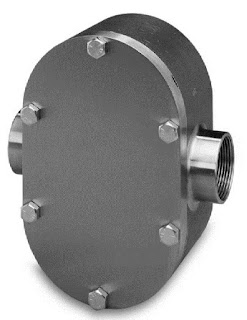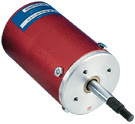 |
| Sophisticated process controller features multiple inputs and control loops, plus PLC logic functions Courtesy Eurotherm |
For industrial process applications, the temperature control function is found in two basic forms. It can reside as an operational feature within a programmable logic controller or other centralized process control device or system. Another form is a standalone process temperature controller, with self-contained input, output, processing, and user interface. Depending upon the needs of the application, one may have an advantage over the other. The evolution of both forms, integrated and standalone, has resulted in each offering consistently greater levels of functionality.
There are two basic means of temperature control, regardless of the actual device used. Open loop control delivers a predetermined amount of output action without regard to the process condition. Its simplicity makes open loop control economical. Best applications for this type of control action are processes that are well understood and that can tolerate a potentially wide variation in temperature. A change in the process condition will not be detected, or responded to, by open loop control. The second temperature control method, and the one most employed for industrial process control, is closed loop.
Closed loop control relies on an input that represents the process condition, an algorithm or internal mechanical means to produce an output action related to the process condition, and some type of output device that delivers the output action. Closed loop controllers require less process knowledge on the part of the operator than open loop to regulate temperature. The controllers rely on the internal processing and comparison of input (process temperature) to a setpoint value. The difference between the two is the deviation or error. Generally, a greater error will produce a greater change in the output of the controller, delivering more heating or cooling to the process and driving the process temperature toward the setpoint.
The current product offering for standalone closed loop temperature controllers ranges from very simple on/off regulators to highly developed products with multiple inputs and outputs, as well as many auxiliary functions and communications. The range of product features almost assures a unit is available for every application. Evaluating the staggering range of products available and producing a good match between process requirements and product capabilities can be facilitated by reaching out to a process control products specialist. Combine your own process knowledge and experience with their product application expertise to develop effective solution options.


